Teaching and Working in a Multimedia World
> Index | Panel 1 | Panel 2 | Panel 3 | Panel 4 | Panel 5
Finding Balance: Teaching Software vs. Critical Thinking
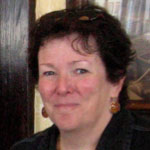 Roxanne O'Connell (panel moderator), Assistant Professor of Visual Communication
at Roger Williams University, holds an M.S. in Human Factors in Information
Design from Bentley. As a teacher and publishing consultant with more than
20 years of experience in design, marketing, and new media, she specializes
in information design, audience research and website usability. Research interests
include New Media, particularly social computing such as Blogging and Podcasting,
Perception and Visual Rhetoric. She is an associate editor for Roger Williams
University's journal of civil discourse, Reason & Respect, and Vice-President
of Epsilon Rho, the Roger Williams chapter of Phi Beta Delta an honor society
for international scholarship. In her teaching, she works to include elements
of service learning and user-centered design. She is currently a Ph.D. candidate
at Salve Regina University.
Roxanne O'Connell (panel moderator), Assistant Professor of Visual Communication
at Roger Williams University, holds an M.S. in Human Factors in Information
Design from Bentley. As a teacher and publishing consultant with more than
20 years of experience in design, marketing, and new media, she specializes
in information design, audience research and website usability. Research interests
include New Media, particularly social computing such as Blogging and Podcasting,
Perception and Visual Rhetoric. She is an associate editor for Roger Williams
University's journal of civil discourse, Reason & Respect, and Vice-President
of Epsilon Rho, the Roger Williams chapter of Phi Beta Delta an honor society
for international scholarship. In her teaching, she works to include elements
of service learning and user-centered design. She is currently a Ph.D. candidate
at Salve Regina University.
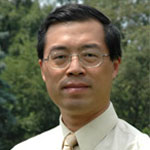 Edgar
Huang is an associate professor in the IUPUI School of Informatics.
His journal articles on media convergence, streaming media, copyright issues
concerning DVD ripping, online imaging, documentary photography history, digital
imaging manipulation, and the Internet and national development are seen in
Convergence, Journalism and Communication Monographs, Visual Communication
Quarterly, Information Technology for Development, etc. Huang's documentary
photography of the Tiananmen Student Movement in 1989 is in the permanent collection
on China New Digest (CND.ORG). He won national awards for his video and Web
productions. Huang has taught media convergence, video production and editing,
photojournalism, Web publishing, graphic and layout design, research methods,
computer-assisted reporting and news writing courses in different universities
since 1984. He has served in the AEJMC VisCom Division for multiple years.
Huang received his Ph.D. degree in Mass Communication from Indiana University
in 1999 and M.F.A. degree in Visual Arts from UC, San Diego, in 1995.
Edgar
Huang is an associate professor in the IUPUI School of Informatics.
His journal articles on media convergence, streaming media, copyright issues
concerning DVD ripping, online imaging, documentary photography history, digital
imaging manipulation, and the Internet and national development are seen in
Convergence, Journalism and Communication Monographs, Visual Communication
Quarterly, Information Technology for Development, etc. Huang's documentary
photography of the Tiananmen Student Movement in 1989 is in the permanent collection
on China New Digest (CND.ORG). He won national awards for his video and Web
productions. Huang has taught media convergence, video production and editing,
photojournalism, Web publishing, graphic and layout design, research methods,
computer-assisted reporting and news writing courses in different universities
since 1984. He has served in the AEJMC VisCom Division for multiple years.
Huang received his Ph.D. degree in Mass Communication from Indiana University
in 1999 and M.F.A. degree in Visual Arts from UC, San Diego, in 1995.
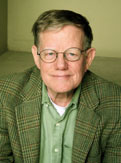 Larry
Pryor was a reporter for The Louisville Courier-Journal and then for
the Los Angeles Times, where he was an environment writer and assistant metro
editor, among a variety of positions he held there. In 1982 he became the news
editor for Times Mirror's pioneering videotex project, Gateway, until that
project ended in 1986. When the Times re-entered electronic publishing in 1994
in a project with Prodigy, he returned to online journalism, eventually becoming
editor of the paper's Web site, latimes.com, in 1996. He moved to the USC/Annenberg
School of Communication in 1997 as the school's first online journalism program
director and helped launch and edit the Online Journalism Review. He is an
associate professor and teaches reporting and writing. He conducts research
on panoramic perspectives and 3-D news spaces.
Larry
Pryor was a reporter for The Louisville Courier-Journal and then for
the Los Angeles Times, where he was an environment writer and assistant metro
editor, among a variety of positions he held there. In 1982 he became the news
editor for Times Mirror's pioneering videotex project, Gateway, until that
project ended in 1986. When the Times re-entered electronic publishing in 1994
in a project with Prodigy, he returned to online journalism, eventually becoming
editor of the paper's Web site, latimes.com, in 1996. He moved to the USC/Annenberg
School of Communication in 1997 as the school's first online journalism program
director and helped launch and edit the Online Journalism Review. He is an
associate professor and teaches reporting and writing. He conducts research
on panoramic perspectives and 3-D news spaces.
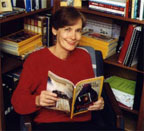 Carol
B. Schwalbe is an assistant professor at the Walter Cronkite School
of Journalism and Mass Communication at Arizona State University, where she
teaches magazine writing and online journalism. She also produces the award-winning
Cronkite online magazine (cronkitezine.asu.edu).
Her scholarly research focuses on the role of images in shaping ideas and public
opinion during the early years of the Cold War, ethical concerns about publishing
violent images, and the visual framing of the Iraq War on the Internet. Before
moving west in 2002, she enjoyed a long career at the National Geographic Society
-- senior text editor for National Geographic magazine, senior articles editor
for National Geographic Traveler, senior producer for nationalgeographic.com,
and editor-writer in the Book Division. She lives in Tucson with her herpetologist
husband, two cats, four Gila monsters, seven desert tortoises, two box turtles,
and a dozen snakes.
Carol
B. Schwalbe is an assistant professor at the Walter Cronkite School
of Journalism and Mass Communication at Arizona State University, where she
teaches magazine writing and online journalism. She also produces the award-winning
Cronkite online magazine (cronkitezine.asu.edu).
Her scholarly research focuses on the role of images in shaping ideas and public
opinion during the early years of the Cold War, ethical concerns about publishing
violent images, and the visual framing of the Iraq War on the Internet. Before
moving west in 2002, she enjoyed a long career at the National Geographic Society
-- senior text editor for National Geographic magazine, senior articles editor
for National Geographic Traveler, senior producer for nationalgeographic.com,
and editor-writer in the Book Division. She lives in Tucson with her herpetologist
husband, two cats, four Gila monsters, seven desert tortoises, two box turtles,
and a dozen snakes.
Materials > PDF: Exercises (Turn Your Print Story Into a Multimedia Story; The YouTube Election?; Photo Fakery; two pages, 68 KB)
Syllabi > Online Media and Advanced Online Media
 Michelle
Seelig is a visual communication educator with over 10 years of teaching
and research in this field. Seelig's academic qualifications include a B.S.
in Advertising and Art Photography and an M.A. in Communication Studies with
an emphasis in Photography from the University of Miami, as well as a Ph.D.
in Mass Communication with an emphasis in Information Technologies from Florida
State University. Her professional experience is in desktop publishing, photography,
video production, and web design. The primary focus of Seelig's academic career
has been in mass and visual communication coupled with emerging technologies.
Her main research interest is the convergence of new and traditional media
in news organizations; this includes the role of content producers in visual
communication, as well as the impact of technology on pedagogy.
Michelle
Seelig is a visual communication educator with over 10 years of teaching
and research in this field. Seelig's academic qualifications include a B.S.
in Advertising and Art Photography and an M.A. in Communication Studies with
an emphasis in Photography from the University of Miami, as well as a Ph.D.
in Mass Communication with an emphasis in Information Technologies from Florida
State University. Her professional experience is in desktop publishing, photography,
video production, and web design. The primary focus of Seelig's academic career
has been in mass and visual communication coupled with emerging technologies.
Her main research interest is the convergence of new and traditional media
in news organizations; this includes the role of content producers in visual
communication, as well as the impact of technology on pedagogy.
Syllabi > Introduction to Graphics for Promotional Media and Web Design and Intro to Still Photography
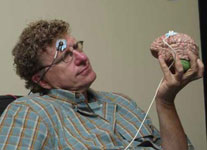 Joel
Geske teaches Advertising (creative track); Web and new media; visual
communication; how the brain processes verbal and visual information; typography
and web design; journalism in newly independent countries, such as Ukraine.
He holds a Ph.D. from Iowa State University and has published in Journalism
Educator and College Teaching and has worked as an advertising manager, copywriter
and associate creative director in an advertising agency. In 1997 he was the
recipient of the Iowa State University College of Liberal Arts and Sciences
Outstanding Teaching in Large Lecture.
Joel
Geske teaches Advertising (creative track); Web and new media; visual
communication; how the brain processes verbal and visual information; typography
and web design; journalism in newly independent countries, such as Ukraine.
He holds a Ph.D. from Iowa State University and has published in Journalism
Educator and College Teaching and has worked as an advertising manager, copywriter
and associate creative director in an advertising agency. In 1997 he was the
recipient of the Iowa State University College of Liberal Arts and Sciences
Outstanding Teaching in Large Lecture.
Note: Bio information and materials provided as received from the panelists and/or panel moderator.